French Polynesia:
a brief overview
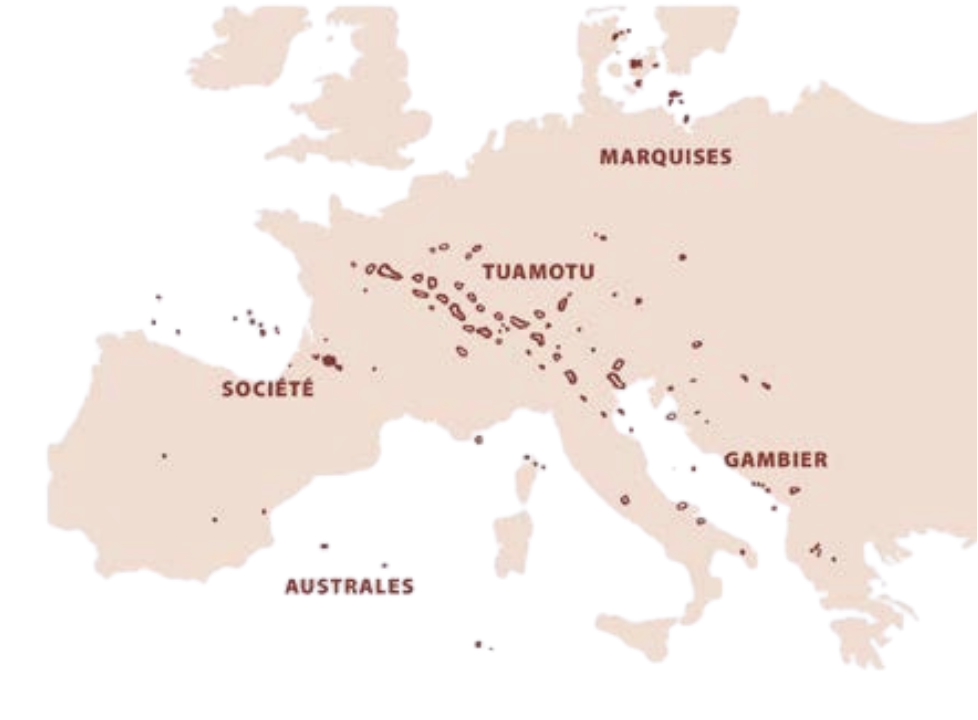
5,5
MILLION
KM²
Total area
covered by
French Polynesia
Located in the heart of the South Pacific, French Polynesia is situated between the American continent and Australia, in a part of the world that is peaceful and
free from conflicts.
French Polynesia consists of 118 islands, of which 76 are inhabited, spread across five archipelagos (Society Islands: Windward and Leeward Islands, Tuamotu,
Gambier, Marquesas, and Austral Islands), covering an exclusive economic zone of 5.5 million km².
With a total land area of 4,000 km², French Polynesia has a population of approximately 278,786 (2022 census), with a median age of 33.3 years and 30% of the population under the age of 25.
While French is the official language, Polynesian languages are still widely spoken. In Papeete, language academies are responsible for their preservation, promotion, and continued use. English is commonly used in business and tourism.
The climate is tropical oceanic, with two distinct seasons:
a warm season from November to March (23°C to 30°C) and a cooler season from April to October (14°C to 29°C).
The institutions of French Polynesia
French Polynesia is an overseas country within the French Republic. It enjoys extended political autonomy recognized by the French Constitution, allowing it to govern itself freely and democratically. The four main institutions of French Polynesia, established and modified by various autonomy statutes since 1984, are:
The President of French Polynesia, Moetai BROTHERSON
Elected by the French Polynesian Assembly from among its members for a renewable five-year term, the President is responsible for leading the local government, implementing laws passed by the Assembly, representing French Polynesia, and, managing the Polynesian administration.
The Government of French Polynesia
The President selects the ministers who form the government.
The Vice President, in addition to managing their own ministerial portfolio, assumes the President’s duties in case of absence or incapacity.
The Assembly of French Polynesia
Comprising 57 members representing the five archipelagos, the Assembly is elected for a five-year term through direct universal suffrage. It adopts resolutions and country laws, which may be subject to review by the Council of State in Paris. The 57 representatives elect the Assembly’s President and vote annually on the budget for French Polynesia.
The Economic, Social, Environmental, and Cultural Council of French Polynesia
Comprising 51 members appointed for a four-year term, the Council is divided into five groups (employees, entrepreneurs, development, social cohesion and collective life, and archipelagos).
It provides opinions on economic and social projects as well as country laws proposed by the government.
The State, represented by the High Commissioner of the French Republic, guarantees public liberties in French Polynesia and retains sovereign responsibilities.
French Polynesia consists of 48 municipalities across the five archipelagos, which manage essential local services for the population.
At the national level, French Polynesia is represented by two senators, three deputies, and one of the Economic, Social and Environmental Council.

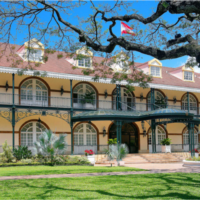
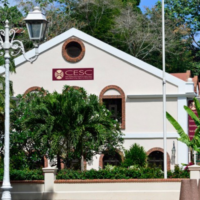

Currency and cost of living
The currency in French Polynesia is the Pacific Franc (XPF). Its exchange rate with the Euro (1 EUR = 119.3317 XPF) is guaranteed by the French government, ensuring monetary stability.
French Polynesia enjoys full transfer freedom and unlimited convertibility. However, the cost of living is relatively high (30–40% higher than in metropolitan France) due to the importation of many goods, primarily from Europe, the United States, New Zealand, and Australia.
1€ = 119,3317 XPF
Banking System
French Polynesia’s banking system consists of 3 banks (Socredo, Banque de Polynésie and Banque de Tahiti) and 3 finance companies (Ofina, BPCE Lease Tahiti and Sogelease BDP). Two payment institutions complete the range of banking services: Marara paiement, a subsidiary of the “Office des Postes et Télécommunications” (OPT), and EGPF Polynésie, known under the trade name “NiuPay”.
Additionally, the “Société de Financement du Développement de la Polynésie Française” (Sofidep) provides equity loans and private equity products, particularly for small and medium-sized businesses. Other financial institutions such as Adie and Initiative Polynésie Française offer respectively microloans and honor loans
to consolidate the entrepreneur’s personal contribution.
Financial institutions not based locally operate from mainland France (Casden Banque Populaire, AFD, CAFFIL, Agence France Locale, BEI, SOGEFOM, BPI France, whose Territorial Delegate is based in New Caledonia, and the Banque des Territoires, whose Branch Manager in French Polynesia is from the Caisse des Dépôts et Consignations).
Infrastructure and transport
To overcome its geographical remoteness (6,200 km from Los Angeles, 18,000 km from Paris, 7,500 km from Santiago de Chile, 9,500 km from Tokyo, 11,594 km from Beijing) and its scattered location (EEZ of 5.5 million km²), French Polynesia has developed modern infrastructure and adapted transport networks.
French Polynesia has an extensive air service with daily flights to major destinations through its international airport. The domestic network of Air Tahiti and Air Moana provides regular service to 48 islands. Tahiti-Faa’a Airport, which handles over 2.5 million passengers per year (2024), serves as an international hub in the South Pacific, with easy access from Europe via the U.S. West Coast, Australia, Japan, New Zealand, Hawaii, New Caledonia and the Cook Islands.
Non-scheduled air traffic remains marginal, mainly carried out by Air Tetiaroa and Air Archipels.
Air Tahiti Nui’s subsidiary, «Tahiti Nui Helicopters» transports passengers on demand. Its services are relatively diversified: tourist flights, work at height, medical evacuations.
The Port of Papeete is a vital logistical hub for Tahiti and its islands, acting as the nerve center for maritime activities. It provides safe, natural shelter for a variety of vessels, from cargo and container ships to foreign oil tankers, as well as a fleet of inter-island schooners that provide regular service between the 5 archipelagos of French Polynesia. The port also plays an increasingly important role as a port of call for many international cruise ships, contributing to the development of tourism in our islands.
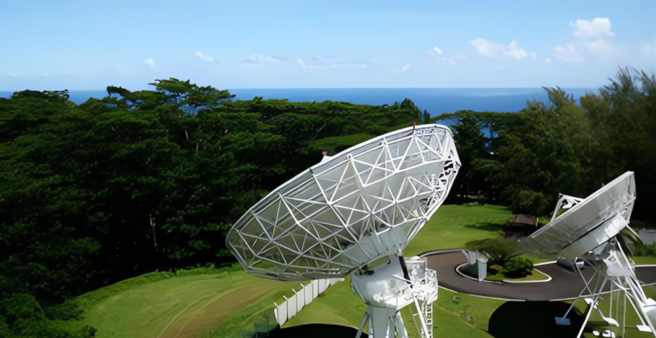

Telecommunication
French Polynesia is linked to the rest of the world by a state-ofthe- art telecommunications system, including ultramodern satellite links, a digital-quality television network and high-speed Internet access.
Thanks to the Honotua and Manatua submarine cables, French Polynesia has an international fiber optic link that enables the transmission of large quantities of information at high speed over very long distances.
Healthcare System
French Polynesia boasts a high-quality healthcare and social protection system. All Polynesians, regardless of their income or geographical location, benefit from coverage financed by the “Caisse de Prévoyance Sociale” (CPS), which comprises 3 schemes: salaried employees, non-salaried employees and the French Polynesia solidarity scheme.
The island of Tahiti boasts a modern hospital with state-of-the-art equipment, as well as a network of clinics.
On the other islands, the Public Health Directorate runs dispensaries, infirmaries and first-aid posts (depending on the number of inhabitants). Private medical practices are also present.
Education system and higher education
While the education system in French Polynesia is largely inspired by that of mainland France, it is adapted to local geographical, economic, social, and cultural conditions, by French Polynesia government which is responsible for education.
Education is a top priority for the Polynesian government, accounting for the largest share of the national budget. With a 98% school enrollment rate, the education system ensures quality through nationally recognized diplomas.
University of French Polynesia (UPF) : Established in 1987, UPF offers programs in sciences, medical sciences, law, economics, management, literature, and languages, serving over 3,200 students annually.
Business School of Tahiti : Since 2010, a business school has been operating in partnership with the Chamber of Commerce, Industry, Services, and Trades (CCISM).
Institute of Higher Private Education of French Polynesia (ISEPP) : Since 2007, ISEPP has provided university training in humanities and social sciences, technology, human resources, communication, environment, and sociology.
National Conservatory of Arts and Crafts (CNAM) : Since 1979, CNAM has offered professional and lifelong education, technological research, innovation, and the promotion of scientific and technical culture.
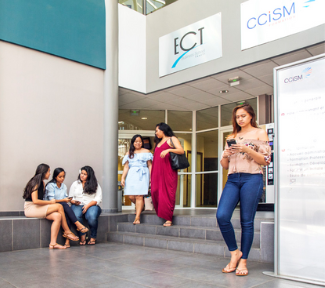

Research and innovation in French Polynesia
Research and innovation in French Polynesia have steadily developed, supported by modern infrastructure and highly qualified researchers.
Research and innovation in French Polynesia is mainly structured around knowledge and issues related to marine and terrestrial biodiversity, the study of Polynesian societies, health risks, applied mathematics and geosciences, all of which are key areas of research.
To ensure that research and innovation serve sustainable and inclusive development, French Polynesia adopted an Innovation Strategy 2030 in 2022, which defines the following key strategic areas : sustainable and decarbonized blue economy development, resilience, excellence in production, bioeconomy, biotechnological valorization, and ecocultural tourism.
There are several research organizations and institutions in Polynesia: the Criobe under the supervision of EPHE-CNRS-Université de Perpignan, Ifremer, IRD, the Institut Louis Malardé (ILM), the Gump station managed by the University of California (Berkeley) and the Université de la Polynésie française (UPF). They carry out studies in the life, earth, human and social sciences, contributing to the scientific influence of the Pacific Rim.


